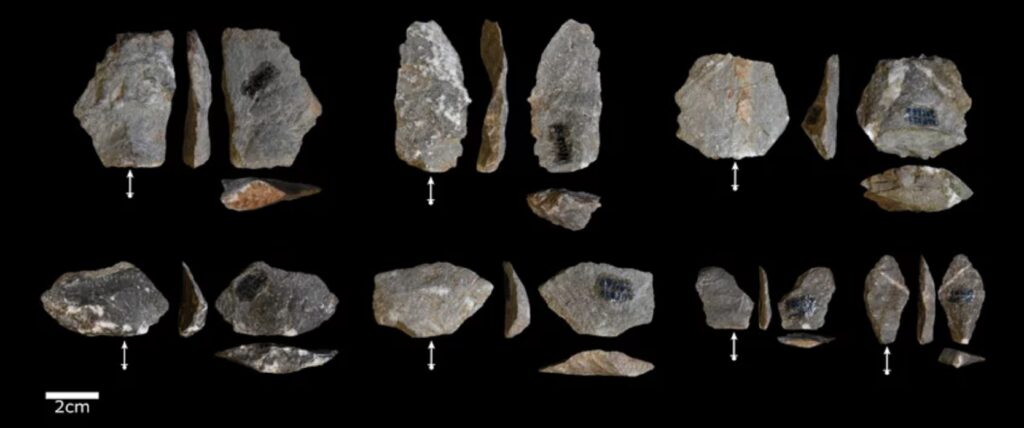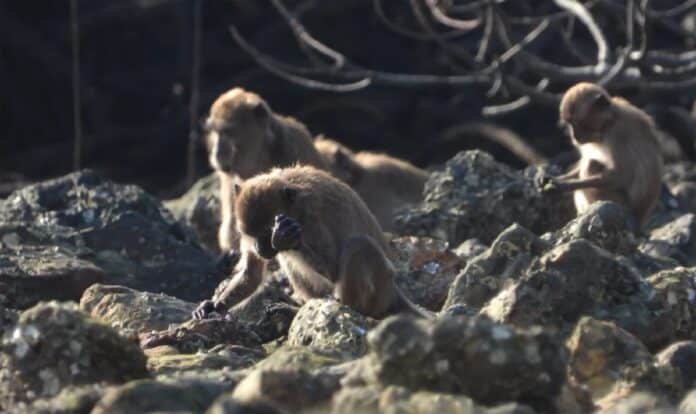Intentionally produced sharp-edged stone flakes and flaked pieces are our primary evidence for the emergence of technology in our lineage. This evidence is used to decipher the earliest hominin behavior, cognition, and subsistence strategies.
In a new study, scientists from the Max Planck Institute for Evolutionary Anthropology have discovered artifacts produced by old-world monkeys in Thailand that resemble stone tools. These artifacts resemble stone tools, which historically have been identified as intentionally made by early hominins.
The study has challenged long-held beliefs about the origins of intentional tool production in our lineage.
The study is based on recent examinations of stone tools made by long-tailed macaques in Thailand’s Phang Nga National Park. These monkeys break open nuts with the use of stone tools. The monkeys frequently smash their anvils and hammerstones in the process. The resulting collection of broken stones is sizable and dispersed throughout the countryside. In addition, many of these artefacts share the same traits that can be used to distinguish deliberately created stone tools from other types of stone tools in some of the earliest archaeological sites in East Africa.

Lead author Tomos Proffitt, a researcher at the Max Planck Institute for Evolutionary Anthropology, said, “The ability to intentionally make sharp stone flakes is seen as a crucial point in the evolution of hominins, and understanding how and when this occurred is a huge question that is typically investigated through the study of past artifacts and fossils. Our study shows that stone tool production is not unique to humans and our ancestors.”
“The fact that these macaques use stone tools to process nuts is not surprising, as they also use tools to gain access to various shellfish. Interestingly, in doing so, they accidentally produce a substantial archaeological record that is partly indistinguishable from some hominin artifacts.”
The scientists demonstrated that many of the artefacts generated by monkeys fall within the range of those often associated with early hominins by comparing the inadvertently created stone fragments formed by the macaques with those from some of the earliest archaeological sites.
Co-lead author Jonathan Reeves highlights: “The fact that these artifacts can be produced through nut cracking has implications for the range of behaviors we associate with sharp-edged flakes in the archaeological record.”
The recently discovered macaque stone tools provide fresh insights into how our earliest ancestors may have developed the first technology. They suggest that this origin may have been connected to behaviors comparable to nut-cracking that may be much older than the earliest archaeological records.
Lydia Luncz, senior author of the study and head of the Technological Primates Research Group at the Max Planck Institute for Evolutionary Anthropology, said, “Cracking nuts using stone hammers and anvils, similar to what some primates do today, has been suggested by some as a possible precursor to intentional stone tool production. This study, along with previous ones published by our group, opens the door to being able to identify such an archaeological signature in the future.”
“This discovery shows how living primates can help researchers investigate the origin and evolution of tool use in our lineage.”
Journal Reference:
- Tomos Proffitt, Jonathan S. Reeves et al. Wild macaques challenge the origin of intentional tool production. Science Advances. Paper Link.
